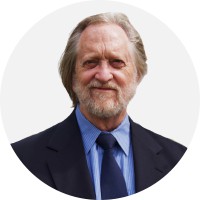The views expressed in our content reflect individual perspectives and do not represent the authoritative views of the Baha'i Faith.
So if the initial attractive force of love, the powerful infatuation that possesses us completely, begins to fade, what can we do about it? What happens next? What can we do to make love a process, not an event, or some neurotic circular pattern of trying to sustain that which is unsustainable?
These questions bring us to the single most crucial mystery in this authentic love relationship with God, the huri of all the huris of love—how to create a system that will foster love as an ongoing process and not just a single event.
That loving process allows for, indeed, encourages and insists upon, human reflection, understanding, and free will, and yet provides enough encouragement and guidance that we could reasonably be expected to be held accountable for succeeding, even as Baha’u’llah, the prophet and founder of the Baha’i Faith, assured us:
… every man hath been, and will continue to be, able of himself to appreciate the Beauty of God, the Glorified. Had he not been endowed with such a capacity, how could he be called to account for his failure?
This essential ingredient is external guidance.
External guidance represents the foundational component in the bridge between the dual expressions of reality. Of course, from a Baha’i perspective, the messengers and prophets of God act as intermediaries between worlds. But because the station and function of these remarkable beings is often misunderstood or misconstrued, we need to pay careful attention to what the Baha’i writings have to say about the ontology of the prophets if we want to understand this part of the process.
Ontology, the branch of philosophy that studies existence, being, and becoming, has always attempted to define the human reality and its relationship to the eternal or metaphysical dimension of reality.
We begin, just as ontology does, with the problem of the gap—how the Creator constructs a bridge between the metaphysical and physical aspects of reality, the process by which the will, or wish, or command Kun! (“Be!”) produces the results Yakunu! (“It is!”).
Let us first portray this process simply in the following terms: from God emanates the desire to be known, a desire from which emanates the Holy Spirit, the medium or power, if you will, by which the divine messenger receives this wish as a command, and thence becomes empowered to translate God’s desire/command into creative increments of progressive guidance and patterns of action to the physical or human reality.
This top-down view of the process thus begins in the realm of the spirit, the dwelling-place of the essentially unknowable reality of the Creator and the preexistent reality of the prophets. The Kingdom of Names (the physical dimension of reality) is then brought into being by degrees through those prophets and intermediaries, who provide guidance in three different conditions or capacities in order to forge a replica of the qualities and attributes of the spiritual world.
There is a causal relationship among these three aspects of reality: the will, the transmittal of that will into increments of action, and the gradual shaping of spiritual forms into physical representation. In this arrangement, there seems to be a clear subordination of physical reality to spiritual reality. In effect, we are assisted by the succession of the messengers of God in fashioning a lesser reality into a social structure and polity expressive of spiritual principles already extant in the realm of the spirit.
This inference is borne out by an axiomatic observation from Abdu’l-Baha found in the book Selections from the Writings of Abdu’l-Baha:
Know thou that the Kingdom is the real world, and this nether place is only its shadow stretching out. A shadow hath no life of its own; its existence is only a fantasy, and nothing more; it is but images reflected in water, and seeming as pictures to the eye.
However, when viewed from another perspective, we can sense a different relationship and, in many ways, a slightly more expansive and complete meaning: a collateral relationship in which both the physical and the metaphysical expressions of the Creator are complete expressions of reality—one expression being the outer or visible aspect of that reality, and the other being the unseen counterpart of that reality. This inference is equally confirmed by another axiomatic statement of Abdu’l-Baha’s from a talk he gave in New York City:
The spiritual world is like unto the phenomenal world. They are the exact counterpart of each other. What ever objects appear in this world of existence are the outer pictures of the world of heaven.
Of particular relevance to this discourse is this second understanding of the relationship between the twin realms of creation, for the world of the spirit is no less a product of the Creator than is the physical realm. Thus, if these two realities are the exact counterpart of each other, then the complete panoply of the infinite expressions of spiritual reality must find expression in the physical world. For example, if one of the attributes of the spiritual realm is limitlessness, then limitlessness must necessarily also find expression in the physical aspect of creation, whether that attribute apply to time, space, plenitude, or complexity.
Stated axiomatically, from Baha’u’llah’s Words of Wisdom: “The source of all learning is the knowledge of God, exalted be His Glory, and this cannot be attained save through the knowledge of His Divine Manifestation.”
Obviously, then, if we want to understand how these beings serve as a bridge between the Creator and the world of the spirit and ourselves, it is crucial that we know something about the ontology of the prophets and messengers. Equally informed by such knowledge will be our ability to establish a meaningful love relationship with this essentially unknowable being.
This series of essays is adapted from John Hatcher’s address to the 2005 Association for Baha’i Studies Conference titled The Huri of Love, which comprised the 23rd Hasan M. Balyuzi Memorial Lecture.
















Comments
Sign in or create an account
Continue with Googleor